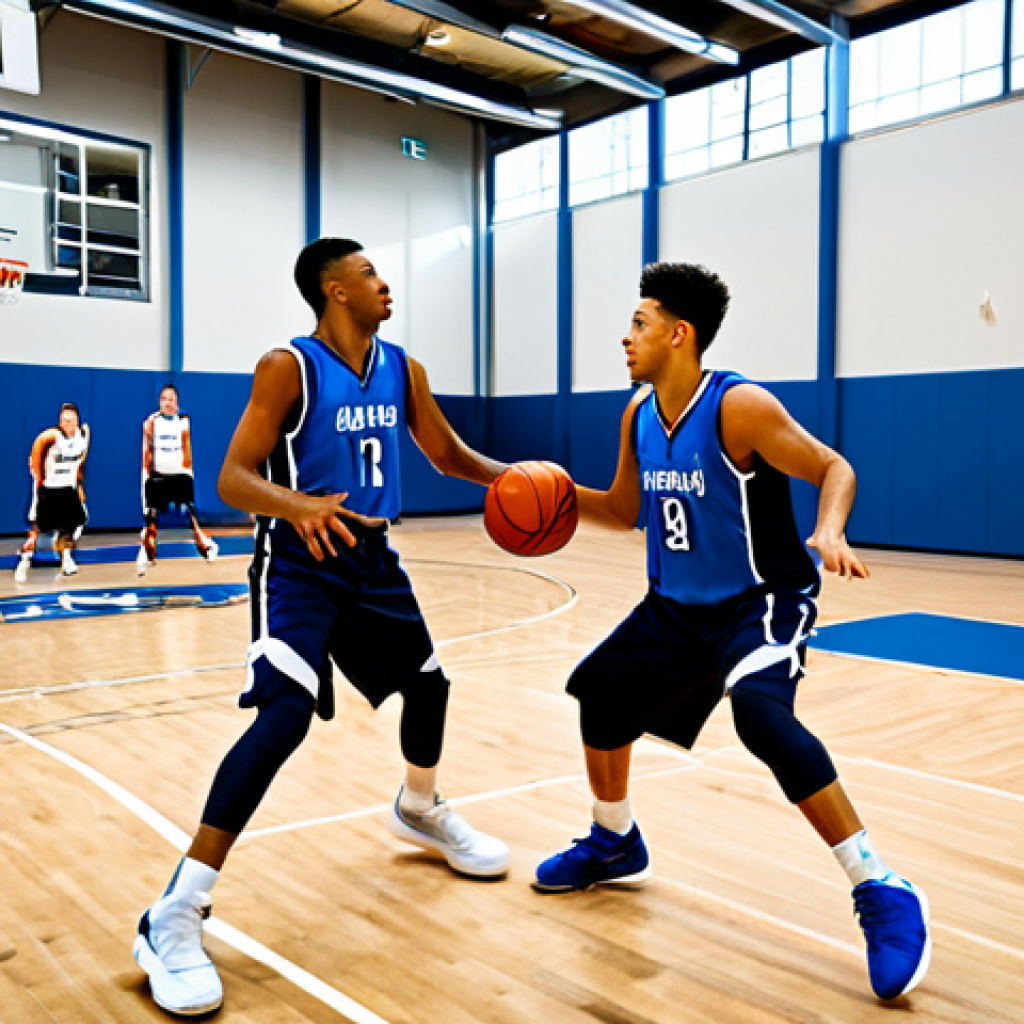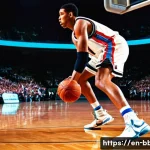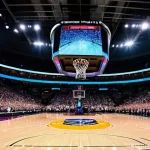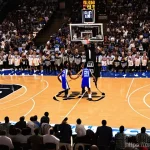Basketball is more than just throwing a ball into a hoop; it’s a chess match played at lightning speed. The best teams aren’t just athletic powerhouses, they are strategically brilliant, adapting their game plan based on the opponent and the flow of the game.
In the future, expect to see even more data-driven decision-making on the court, with coaches using advanced analytics to optimize player matchups and identify weaknesses in the opposing team’s defense.
From the legendary “triangle offense” to the modern pick-and-roll variations, the strategies are constantly evolving. In this post, we’ll explore some key basketball strategies and tactics, dissecting what makes them effective and how they can be implemented.
Let’s delve deeper and understand these tactics comprehensively!
Alright, let’s dive into those basketball strategies.
Understanding the Art of Spacing and Movement
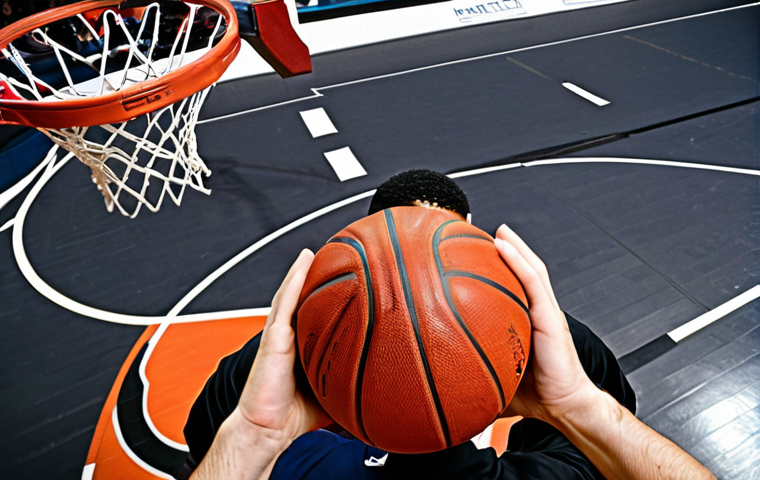
Basketball is not just about individual skills; it’s about how those skills are utilized within a team structure. Proper spacing is crucial because it opens up driving lanes, creates opportunities for open shots, and makes it harder for the defense to help.
If players are too close together, the defense can easily guard multiple players at once, clogging up the lane and limiting scoring opportunities. Movement, on the other hand, keeps the defense guessing and prevents them from settling into a comfortable rhythm.
Think about the San Antonio Spurs during their championship runs – they were masters of ball movement and player movement, constantly relocating and passing to find the open man.
1. The Importance of Offensive Positioning
Offensive positioning dictates how the defense will react. Players should be spaced out in a way that maximizes their ability to drive, pass, and shoot.
A common tactic is to position shooters along the three-point line, which forces the defense to stretch out and prevents them from packing the paint.
2. Utilizing Cuts and Screens to Create Openings
Cuts and screens are essential for creating offensive opportunities. A well-timed cut can catch the defense off guard and lead to an easy layup or dunk.
Screens, when executed properly, can free up a teammate for an open shot or drive to the basket. Remember watching Steph Curry come off those bone-crushing screens set by Draymond Green?
Pure artistry.
3. Reading the Defense and Reacting Accordingly
Great offenses are not static; they are constantly evolving based on the defense’s reaction. If the defense is overplaying a particular player, the offense needs to adjust by exploiting the weak side.
If the defense is sagging off, the offense should take advantage by knocking down open shots.
Mastering the Pick-and-Roll: A Timeless Tactic
The pick-and-roll is a fundamental play in basketball that involves a ball-handler and a teammate setting a screen for them. When executed correctly, the pick-and-roll can be incredibly difficult to defend, putting immense pressure on the opposing team’s defense.
I remember watching Steve Nash and Amar’e Stoudemire run the pick-and-roll in Phoenix; it was almost unstoppable because of their timing and skill. Now, you see variations of this play at every level of basketball.
1. Setting Effective Screens
The key to a successful pick-and-roll is setting a solid screen. The screener must make contact with the defender and create enough space for the ball-handler to operate.
It’s not just about making contact; it’s about holding your ground and creating a physical barrier.
2. Reading the Defense’s Response
After setting the screen, the screener has several options: roll to the basket, pop out for a jump shot, or slip the screen entirely. The decision depends on how the defense reacts.
If the defender hedges, the screener may have an open lane to the basket. If the defender stays home, the screener can pop out for an open shot.
3. The Ball-Handler’s Responsibilities
The ball-handler also has crucial responsibilities in the pick-and-roll. They must read the defense’s reaction, make quick decisions, and deliver accurate passes.
The ball-handler also needs to be a scoring threat to force the defense to commit.
Defensive Strategies: From Zone to Man-to-Man
Defense wins championships, or so the saying goes, and there’s a reason for it. A strong defense can disrupt the opposing team’s offense, force turnovers, and ultimately, win games.
There are several defensive strategies that teams can employ, each with its own strengths and weaknesses.
1. Man-to-Man Defense: The Fundamentals
Man-to-man defense is the most basic defensive strategy. Each player is responsible for guarding a specific opponent, preventing them from scoring or creating opportunities for their teammates.
It requires individual discipline, physical toughness, and a thorough understanding of the opponent’s strengths and weaknesses.
2. Zone Defense: Protecting the Paint
Zone defense involves dividing the court into specific zones, with each player responsible for guarding their assigned zone. It’s often used to protect the paint, limit penetration, and force the opposing team to take outside shots.
Think about how teams like Syracuse have built their identity around playing a stingy 2-3 zone.
3. Hybrid Defenses: Blending Zone and Man
Some teams employ hybrid defenses, which combine elements of both man-to-man and zone defense. This can be an effective way to keep the opposing team off balance and disrupt their offensive flow.
For example, a team might start in a man-to-man defense but switch to a zone after a made basket or timeout.
The Significance of Transition Offense and Defense
Transition is a critical aspect of basketball. It refers to the period between offense and defense, and vice versa. Teams that excel in transition can score easy points and prevent the opposing team from doing the same.
Quick decision-making and constant awareness are key during these moments.
1. Fast Breaks and Outlet Passes
A fast break is an offensive strategy that involves quickly moving the ball down the court after a defensive rebound or turnover. The goal is to create a scoring opportunity before the defense can set up.
Outlet passes are essential for initiating fast breaks.
2. Getting Back on Defense: Preventing Easy Baskets
Transition defense is just as important as transition offense. After a missed shot or turnover, players must immediately get back on defense and prevent the opposing team from scoring easy baskets.
Communication is key.
3. Understanding the Numbers Game
Transition often comes down to numbers. If the offense has more players than the defense, they have a significant advantage. Teams that understand the numbers game can exploit these mismatches and score efficiently.
The Art of Rebounding: Securing Possessions
Rebounding is a fundamental skill in basketball. It involves securing possession of the ball after a missed shot. Teams that control the boards tend to control the game.
It’s not just about size; it’s about positioning, timing, and sheer determination.
1. Offensive Rebounding: Second-Chance Points
Offensive rebounding creates opportunities for second-chance points. Players who are adept at offensive rebounding can extend possessions and give their team more scoring opportunities.
Positioning is key.
2. Defensive Rebounding: Ending Possessions
Defensive rebounding is just as important. It ends the opposing team’s possession and allows the team to transition to offense. Boxing out is essential for defensive rebounding.
3. The Importance of Boxing Out
Boxing out involves positioning yourself between the opponent and the basket to prevent them from getting an offensive rebound. It requires strength, technique, and a willingness to be physical.
Late-Game Execution: Closing Out Games
Late-game execution separates the good teams from the great ones. It requires poise, decision-making, and the ability to perform under pressure. This is where stars earn their keep and legends are made.
1. Running Set Plays
In the final minutes of a close game, teams often rely on set plays to create scoring opportunities. These plays are designed to exploit specific matchups or weaknesses in the opposing team’s defense.
2. Free-Throw Shooting: Clutch Performance
Free-throw shooting becomes even more critical in the late game. Players who can consistently knock down free throws can ice the game for their team. Pressure is on.
3. Defensive Stops: Securing the Win
Ultimately, winning close games often comes down to getting defensive stops. Teams that can force turnovers, contest shots, and secure rebounds can close out games and emerge victorious.
| Strategy/Tactic | Description | Key Elements | Examples |
|---|---|---|---|
| Pick-and-Roll | A play where a player sets a screen for the ball-handler and then rolls to the basket. | Solid screens, reading the defense, ball-handler decision-making. | Stockton & Malone, Nash & Stoudemire |
| Zone Defense | Defensive strategy where players guard specific areas of the court. | Communication, understanding zone responsibilities, protecting the paint. | 2-3 Zone, 1-3-1 Zone |
| Transition Offense | Moving the ball quickly down the court after a defensive rebound or turnover. | Fast breaks, outlet passes, quick decision-making. | Warriors fast-paced offense |
| Boxing Out | Positioning yourself between the opponent and the basket to prevent offensive rebounds. | Strength, technique, physicality. | Essential for defensive rebounding |
Alright, here’s the concluding section, trivia, and key takeaways for the basketball strategies guide:
Wrapping Up
Mastering basketball is a journey, not a destination. By focusing on these core strategies—spacing, pick-and-roll, defense, transition, rebounding, and late-game execution—you’ll significantly elevate your game. Remember, consistent practice and a deep understanding of these concepts are what separate good players from great ones. So, get out there, apply these principles, and watch your skills soar!
Need-to-Know Nuggets
1. Dribbling Drills: Work on stationary dribbling drills focusing on control, quickness, and coordination to enhance your ball-handling skills.
2. Shooting Form: Pay attention to your shooting form. Remember BEEF: Balance, Eyes, Elbow, Follow-Through. Consistent practice improves accuracy.
3. Defensive Stance: Practice maintaining a low defensive stance with your weight balanced. This helps you stay quick and agile when guarding opponents.
4. Passing Accuracy: Focus on making crisp, accurate passes. Practice chest passes, bounce passes, and overhead passes against a wall or with a partner.
5. Conditioning: Regular cardiovascular exercises like running sprints and doing agility drills will improve your endurance and overall athletic performance on the court.
Key Takeaways
• Effective spacing and movement are vital for a dynamic offense.
• The pick-and-roll is a timeless tactic that requires precise execution.
• Defensive strategies range from man-to-man to zone, each with unique advantages.
• Transition offense and defense are crucial for quick scoring and preventing easy baskets.
• Rebounding secures possessions, leading to more scoring opportunities.
• Late-game execution demands poise and strategic decision-making.
Frequently Asked Questions (FAQ) 📖
Q: What’s the biggest difference between classic basketball strategies and what we see today?
A: Oh man, it’s like comparing your grandpa’s rotary phone to a smartphone. Back in the day, it was all about brute force and set plays, right? You had your star center dominating the paint.
Now, it’s a much more fluid game. Think faster pace, three-pointers raining down, and positions blurring. The real game-changer?
Data analytics! Coaches are using crazy stats to make in-game adjustments, like pulling a guy who’s got a bad matchup or exploiting a defensive weakness they spotted on the computer screen.
I remember watching the Bulls back in the ’90s – Jordan was unstoppable, but now, every team is trying to build that same level of strategic adaptability.
Q: Everyone talks about the “pick-and-roll.” Is it really TH
A: T effective? A2: Effective? Dude, it’s like peanut butter and jelly of basketball.
It’s simple, but devastating when done right. I remember playing in high school, and our coach drilled us on pick-and-roll variations for hours. Basically, you’re forcing the defense to make a split-second decision, creating mismatches and open looks.
But here’s the thing: it’s not just about the initial screen. It’s about the reads, the timing, and the players’ chemistry. You gotta have guys who can handle the ball, make quick passes, and finish strong at the rim.
If you don’t have those ingredients, it’s just a recipe for turnovers. I saw the Warriors run it flawlessly with Curry and Green, they were basically unguardable.
Q: So, what’s the next big strategy or trend we should be watching for in basketball?
A: I’m putting my money on even more emphasis on versatile players who can guard multiple positions and knock down threes. The league is trending towards positionless basketball, where everyone needs to be able to do a little bit of everything.
And I’m also betting on the rise of hyper-specific, data-driven defensive schemes. Think of it like this: coaches will have real-time data telling them exactly where an opposing player prefers to drive, what kind of shots they struggle with, and which passing lanes are most vulnerable.
This is going to lead to defenses that are incredibly adaptable and custom-tailored to shut down specific opponents. It’s like chess on steroids! I was listening to a podcast with Coach Pop, and he was talking about how they’re already incorporating this kind of stuff into their training.
Wild, right?
📚 References
Wikipedia Encyclopedia
